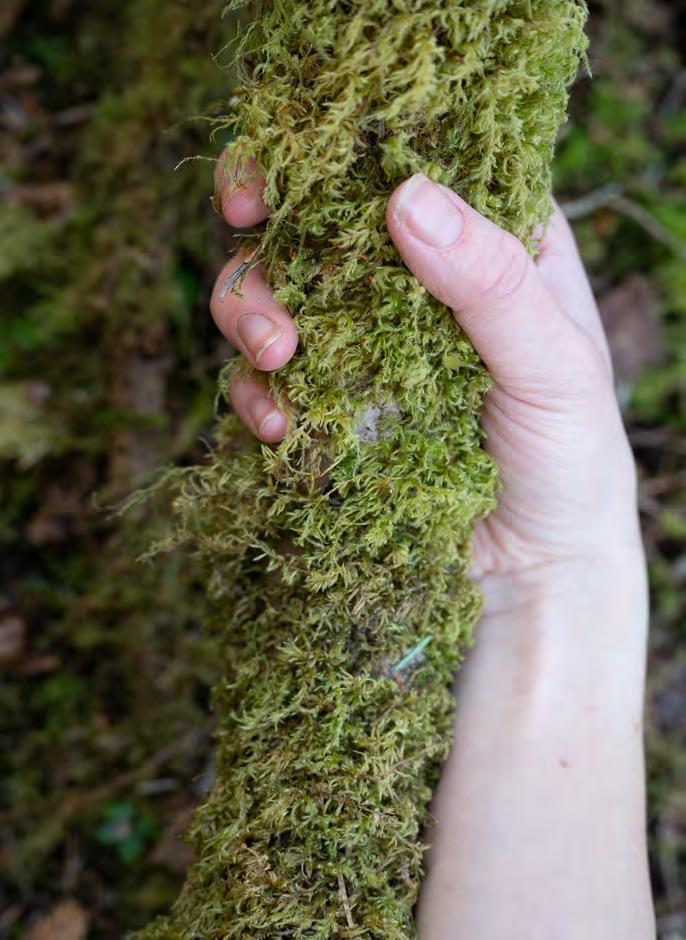
3 minute read
A Mutual Reliance
Just as fiction can integrate highly accurate arboreal science, popular texts that are more scientifically oriented still situate the data within a history of how science and the arts have evolved from the personal passions of scientists.
Florence Williams graduated with a PhD in Organic Chemistry from the University of California, Irvine. She is now a public speaker, journalist, and freelance writer for publications such as National Geographic and . Williams’ more “matThe New York Times ter-of-fact” writing differentiates from The Nature Fix Wohlleben’s . In The Hidden Life of Trees The Nature Williams persuades her audience on “Why nature Fix makes us happier, healthier and more creative.” Though words like “happier” and “more creative” seem ambiguous and subjective, she utilizes the knowledge of credible nature neuroscience researchers, traveling with and quoting them throughout her book. “The aspiration of this book: to find the best science behind our nature-primed neurons and to share it,” she writes. Williams’ journalistic style of documentation blends with her first-person thoughts and experiences. Jason Mark from The New York writes, “She’s got the pop-sci presentation Times down pat—breezy enough to draw in the lay reader, thorough enough to satisfy the expert.” 8
Advertisement
Aristotle, Charles Darwin, Albert Einstein, Teddy Roosevelt, John Muir, Beethoven—they all gathered inspiration from the natural world. Williams quotes Beethoven in the book’s introduction: “The woods, the trees and the rocks give man the resonance he needs.” She prefaces that, “This book explores the science behind what poets and philosophers have known for eons: place matters…these men were speaking of a melding of inner and outer systems…they were arguing the explorations of twenty-first-century neuroscience…our nervous systems are built to resonate with set points derived from the natural world.”

Williams sets up the book with a string of relationships between the sciences and the arts, a way in which they work together to define each other. Her research revolves around proving with science how nature positively impacts seemingly immeasurable human feelings—happiness, creativity, well-being, awe. Williams writes with an intuitive knowing backed by scientific proof, which matches the subject of her study—she sets out to explain the neurological science behind the innate human draw to nature for peace.
Williams’ research found that trees in forests, especially Evergreens, pump phytoncides into the air. Phytoncides are aerosols that smell good and decrease cortisol (stress hormone) levels in humans. She relates that these tree scents have also been shown to increase the level of natural killer immune (NK) cells in the human body. NK cells are a type of white blood cell, that “send self-destruct messages to tumors and virus-infected cells.” Her description of human bodies’ inner-processes reads similar to the way Wohlleben’s inner-processes of tree bodies reads. Where Powers trees communicating in shows “words before words,” these non-fiction texts both suggest wordless are being from messages sent inside the bodies of trees and humans, via chemicals and cells. These tree chemicals and human cells are defending their bodies from a perceived danger. It is then an interesting connection that when both bodies come together, human and tree, the human cells benefit from the trees’ scent signals. Williams keeps her readers engaged, rotating between the scientific proofs and the philosophical or spiritual beliefs that draw people to nature. This holistic approach draws emotion and cognition together—the science and the arts, the measurable and the awe of the immeasurable.
“For millennia, humans alone or in small groups have at times sought out a sparer, more elemental connection to the forces of nature. They come because they are needing something, and they keep coming because they are finding it. Their pursuits may be spiritual, interpersonal or emotional, deeply human and complex and unlikely to be explained in a bar graph.”
This way of thinking reiterates the indigenous ecological teachings in . In each Braiding Sweetgrass chapter Williams introduces the reader to a new culture that has prioritized the study and practice of nature healing. She acknowledges the cultures’ historical beliefs and relates them to their current environmental values. “Once upon a time in Finland, there were little forest spirits who could put spells on people who were too noisy or who treated the forest with disrespect,” she begins her chapter on Finland’s forest findings. This introduction sheds light on the Finnish peoples’ historical relationship with the land, which motivates their research on forests’ effects on human health. Williams’ movement between hard science and anecdotal stories keeps the reader engaged on an emotional and logical level.











